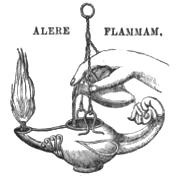AURORÆ:
THEIR CHARACTERS AND SPECTRA.
BY
J. RAND CAPRON, F.R.A.S.
“And now the Northern Lights begin to burn, faintly at first, like sunbeams playing in thewaters of the blue sea. Then a soft crimson glow tinges the heavens. There is a blush on thecheek of night. The colours come and go; and change from crimson to gold, from gold tocrimson. The snow is stained with rosy light. Twofold from the zenith, east and west,flames a fiery sword; and a broad band passes athwart the heavens, like a summer sunset. Softpurple clouds come sailing over the sky, and through their vapoury folds the winking stars shinewhite as silver. With such pomp as this is Merry Christmas ushered in, though only a singlestar heralded the first Christmas.”—Longfellow.
LONDON:
E. & F. N. SPON, 46 CHARING CROSS.
NEW YORK:
446 BROOM STREET.
1879.

PRINTED BY TAYLOR AND FRANCIS,
RED LION COURT, FLEET STREET.
TO
Prof. CHARLES PIAZZI SMYTH, F.R.S.E.,
ASTRONOMER ROYAL FOR SCOTLAND,
ONE OF THE EARLIEST SPECTROSCOPIC OBSERVERS
OF
THE AURORA AND ZODIACAL LIGHT,
THIS VOLUME
IS
RESPECTFULLY DEDICATED
BY
THE AUTHOR.
PREFACE.
Probably few of the phenomena of Nature so entirely charm and interestscientific and non-scientific observers alike as the Aurora Borealis, or“Northern Lights” as it is popularly called. Whether contemplated asthe long low quiescent arc of silver light illuminating the landscape with atender radiance, as broken clouds and columns of glowing ruddy light, or assheaves of golden rays, aptly compared by old writers to aerial spears, such aspectacle cannot fail at all times to be a subject of admiration, in some caseseven of awe.
Hence it is no wonder that the Aurora has always received a considerableamount of attention at the hands of scientific men. Early explorers of theArctic Regions made constant and important observations of it and itscharacter; and the list of references to works given in the Appendix willshow how often it formed the subject of monographs and communications tolearned Societies. The early contributions seem relatively more numerousthan those of a later date; and the substance of them will be found well[vi]summed up in Dr. Brewster’s ‘Edinburgh Encyclopædia’ (1830), article“Aurora.” A most complete and able epitome of our more recent experienceand knowledge of the Aurora and its spectrum has been contributed by myfriend Mr. Henry R. Procter to the present (9th) edition of the ‘EncyclopædiaBritannica,’ article “Aurora Polaris.” It is, however, a drawback to Encyclopædicarticles that their matter is of necessity condensed, and that theyrarely have the very desirable aid of drawings and engravings to illustratetheir subjects. In spite, therefore, of the exhaustive way, both as to fact andtheory, in which the contributor to the ‘